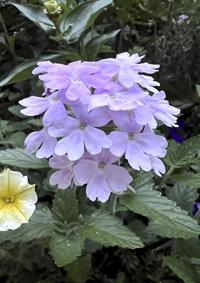Summer annuals are the champions of the late-season garden.
Perennials are the majority residents in my , and each year, I welcome the reliable, repeat performers when they arrive to spend summer like a dear, old friend who comes to visit. Most bloom intermittently from late spring through August, but as I flip my calendar to September, it’s apparent that many of them have one foot out the door.
However, the annuals that share their beds don’t care that Halloween decorations are appearing in the stores or that pumpkin spice lattes are back. They’re still showing up every day like it’s mid-July.
I didn’t always plant annuals in the ground, instead relegating a few seasonal purchases of petunias, impatiens and calibrachoas to . But I always regretted that decision when the shoulder season between summer and fall crept in. This year, the annual Beacon impatiens, Superbena verbenas and Queen Lime zinnias I planted in spring are carrying the late-season garden.
TRUE ANNUALS OR TENDER PERENNIALS
True annuals, like zinnias and marigolds, are plants that complete their entire life cycles, from seed to senescence — or death — in one year. They exist to reproduce, sometimes self-sowing, or dropping seeds on the ground that sprout the following year. But those second-year plants are offspring, not a re-emergence of last season’s annuals.
Most plants regarded as annuals in four-season regions are actually tender perennials from the tropics that can’t withstand frosts and freezes. Popular tender perennials grown as annuals include browallia, celosia, impatiens, lantana, Madagascar periwinkle, snapdragon and Pelargonium, the annual commonly called “geranium” (not to be confused with the perennial Geranium commonly called “cranesbill”).
PROS AND CONS OF ANNUALS
Over the past few years, I’ve grown to appreciate annuals and tender perennials as the garden workhorses they are. None of this waxing and waning stuff — most bloom nonstop from spring straight through frost, relentlessly holding down the fort while their perennial bedmates take intermittent rests.
Of course, there are downsides. Some annuals require regular deadheading, the removal of unsightly spent blooms, to prevent seed production that would divert their energy away from blooming. But in recent years, breeders have been developing “self-cleaning” varieties that eliminate the need for this chore, and those are worth seeking out.
Although they are less expensive than perennials, annual plants must be purchased yearly. That cost can become prohibitive, especially for those gardening on large properties.
But after the perennials start winding down, as is happening right now in my own garden, both types of annuals will remain loyal until breathing their final, frosty breath, likely sometime in November. And that’s the type of friend every garden can use.
—-
Jessica Damiano writes the award-winning and regular gardening columns for The AP. to get weekly gardening tips and advice delivered to your inbox.
—-
For more AP gardening stories, go to










































